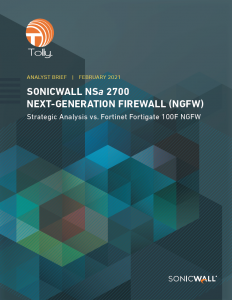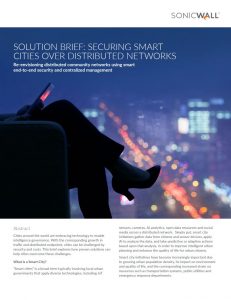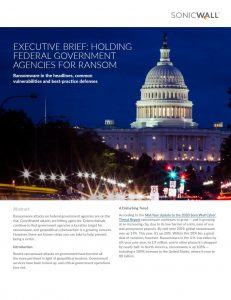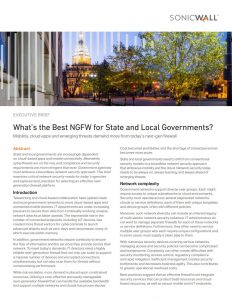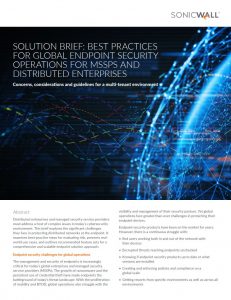SonicWall NSa 2700 vs. Fortinet FortiGate 100F

Which one is right for me?
Next-generation firewalls (NGFWs) are getting more powerful as vendors add more and more features to them. There’s no doubt that today’s NGFWs are far more sophisticated and capable than even those released just a few years ago. As vendors add new functionalities such as IPS, application control, content filtering, anti-malware, DNS security, and cloud management, it has become harder for average customer to find the right solution for their environment.
SonicWall commissioned Tolly Group to compare the price and performance of SonicWall’s recently released NSa 2700 to the Fortinet FG 100F. The two firewalls have similar form factor and are comparable from single appliance price point. Tolly used the published numbers and prices from both vendors to calculate the Total Cost of Ownership (TCO) for a 3-year, High-Availability appliance model with comparable security features. The full report is here.
When calculating TCO, there are three key considerations: price, protection and performance. The ideal solution will cost least while providing equivalent or, ideally, better protection and functionality. Here are a few of the report’s key findings:
SonicWall’s 3-year TCO is less than two-thirds that of Fortinet
This report compares SonicWall’s NSa 2700 Total Secure Advanced Edition with Fortinet FG-100F Unified Threat Protection, both configured in HA mode. The SonicWall solution has a significantly lower 3-year TCO of $11,002, due to it not charging for the second unit’s licensing. This puts it significantly below Fortinet’s total cost of ownership of $16,520.
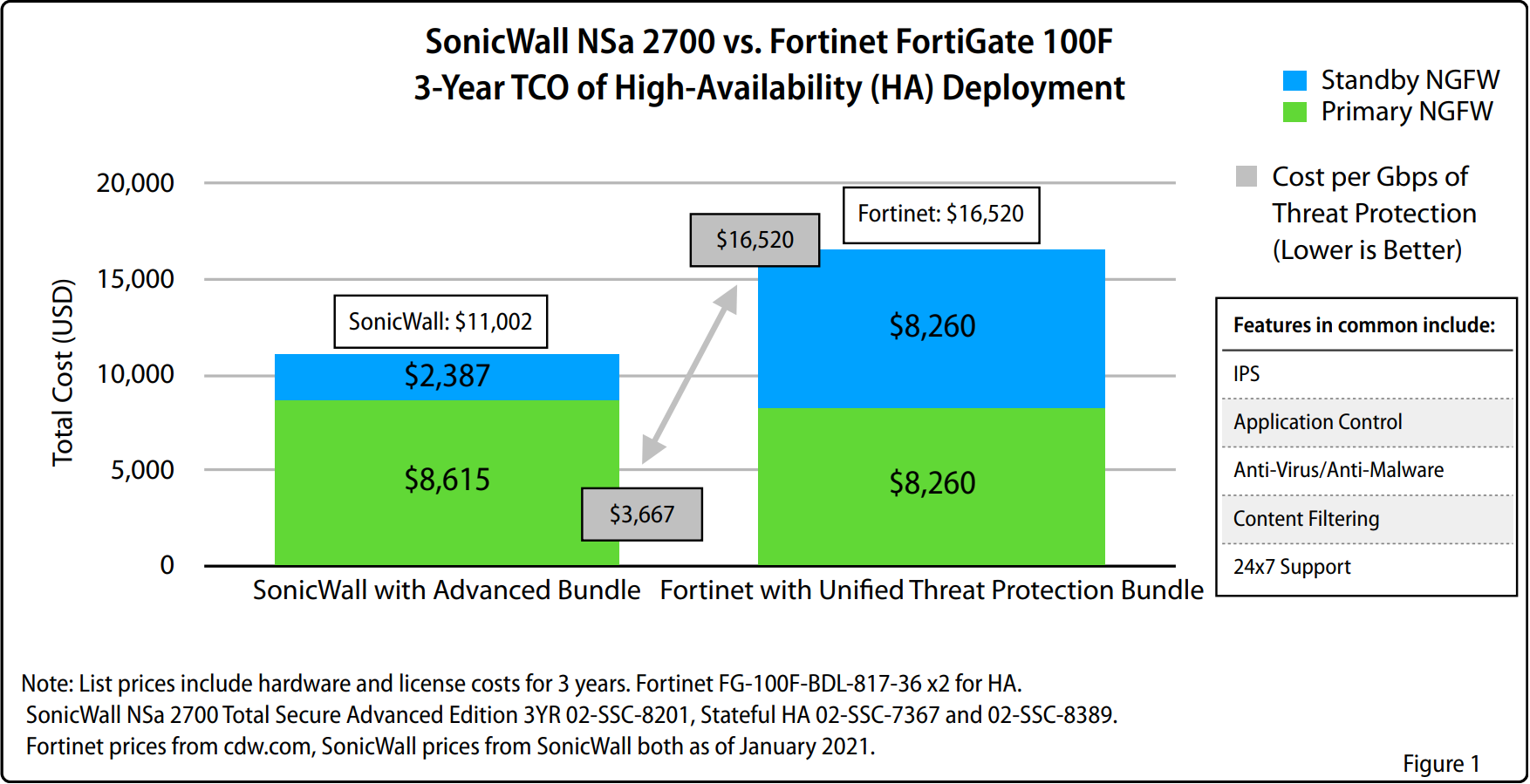
SonicWall’s advertised threat protection throughput is 3x that of Fortinet
When looking at product data sheets, it is not uncommon to be overwhelmed with multiple performance numbers. When evaluating a security appliance, you should look for performance numbers that will most closely replicate how you will use the solution in your environment. In the case of a firewall, that number is usually Threat Protection/Prevention when most security features are turned on.
While the two firewalls have similar form factor and price per appliance, SonicWall’s solution offers 3.0 Gbps threat prevention throughput, compared to Fortinet’s 1 Gbps.
SonicWall has a dramatically lower cost per Gbps for threat protection
At the end of the day, what is most important to an organization is how much they have to spend to protect their environment. For a firewall, that measure is commonly referred to as the cost of threat prevention/protection and is calculated by dividing the TCO by throughput.
SonicWall’s solution has a cost of $3,667 for each Gbps of traffic it protects. Fortinet’s number is $16,520. That is 4.5x the cost of SonicWall.
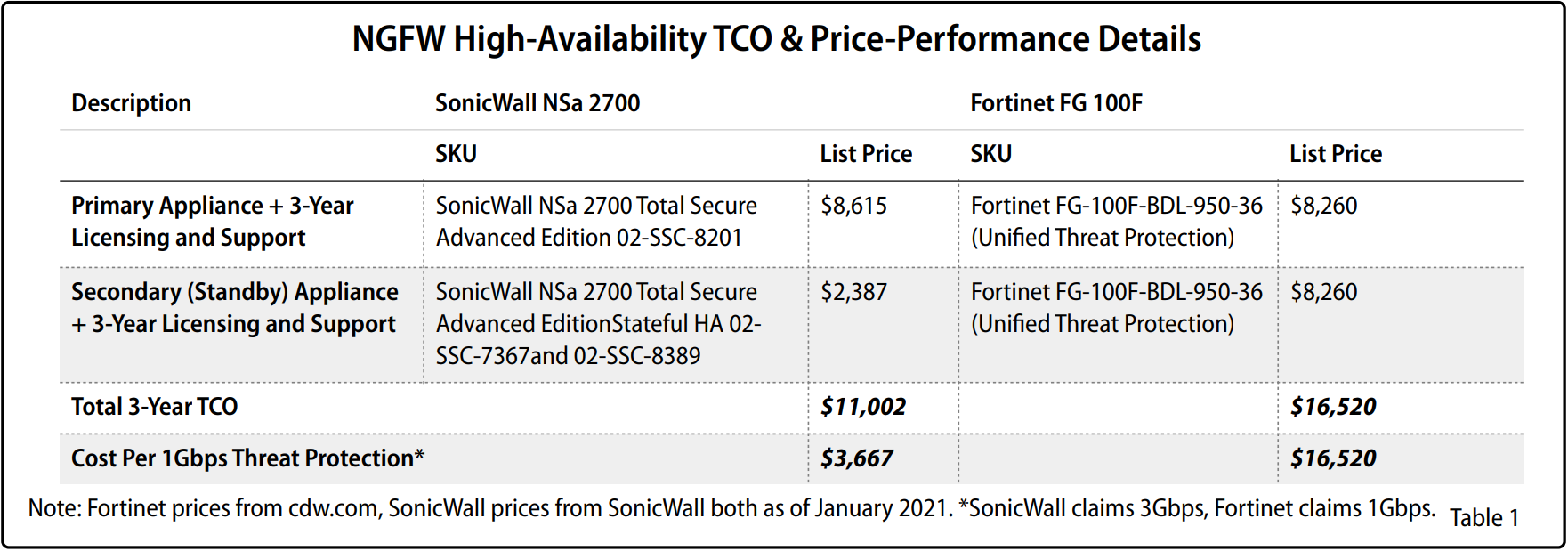
Conclusion
When evaluating any security solution, it is important to compare apples to apples. You should obtain and compare the total cost of ownership for 3 to 5 years as opposed to looking at list prices. It is also crucial to look at the right performance numbers, as opposed to just the highest number that vendors offer in their data sheets.
Share This Article

An Article By
An Article By
SonicWall Staff
SonicWall Staff
